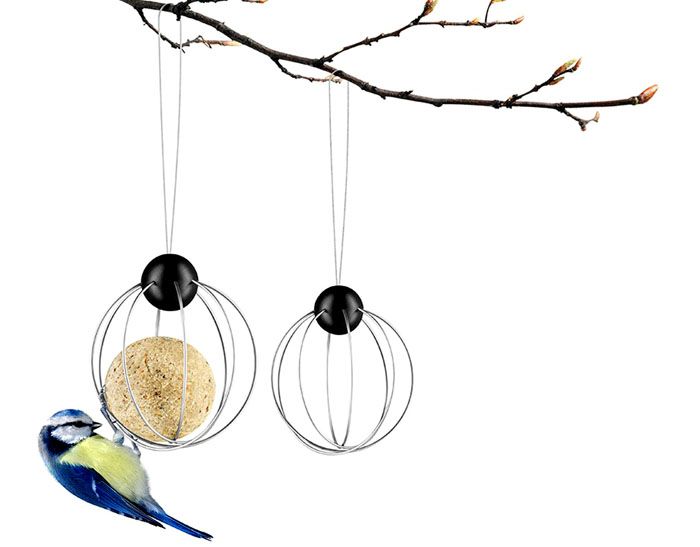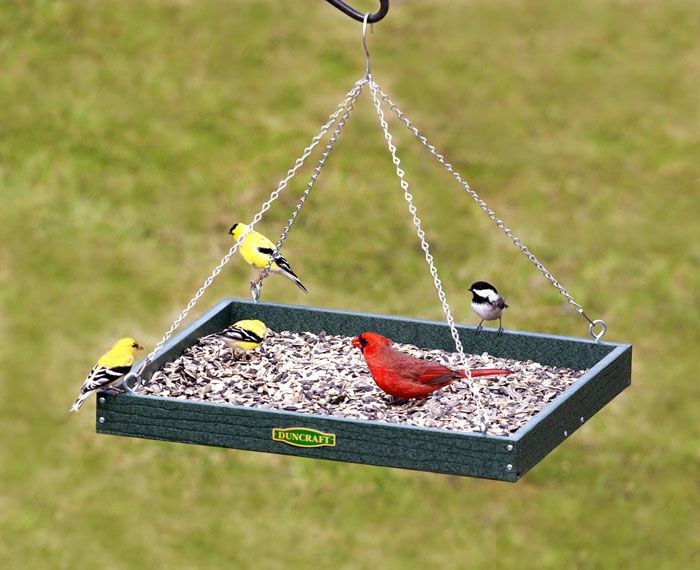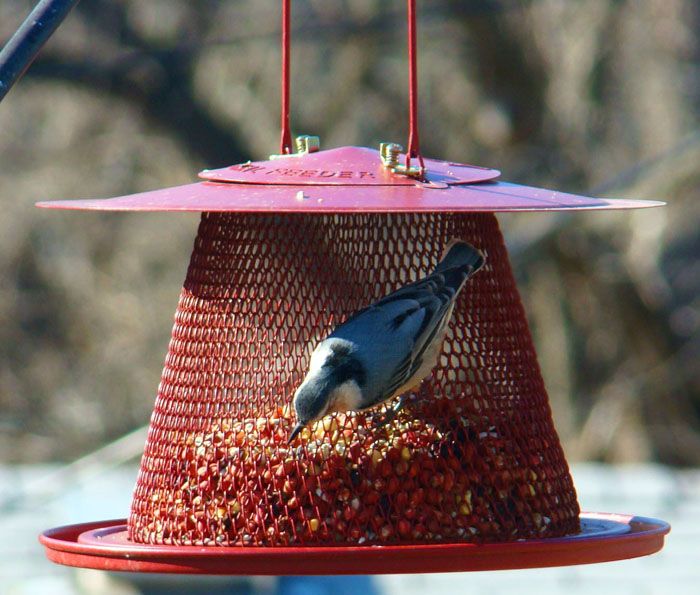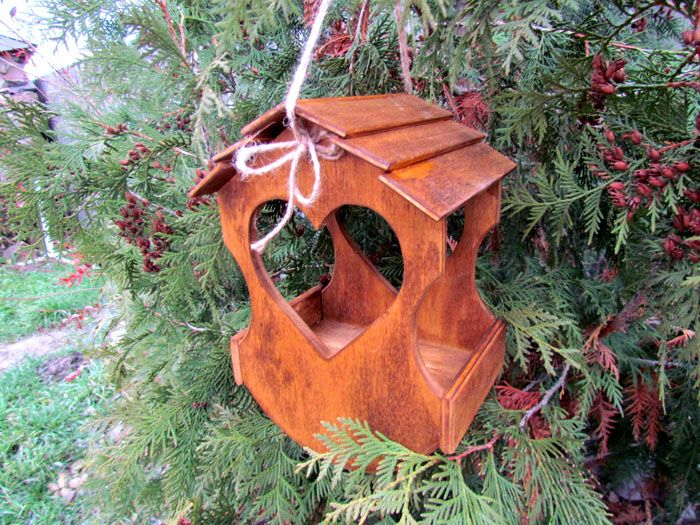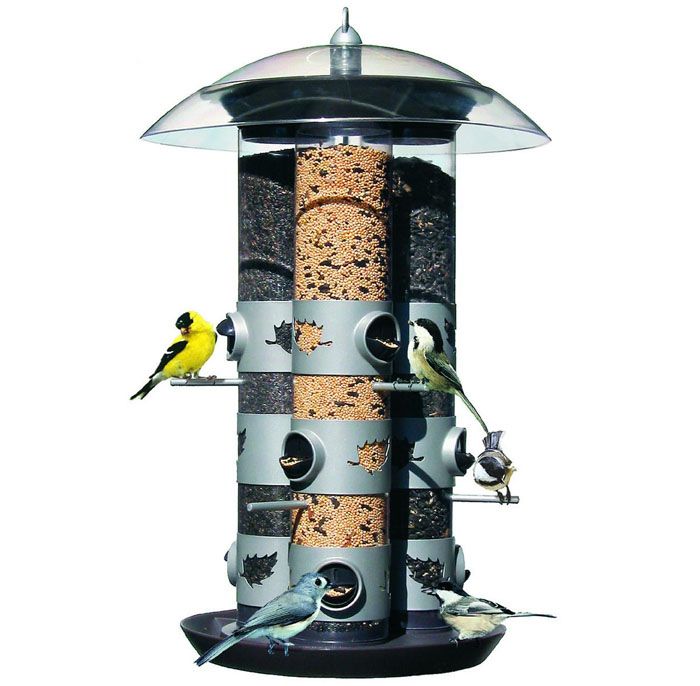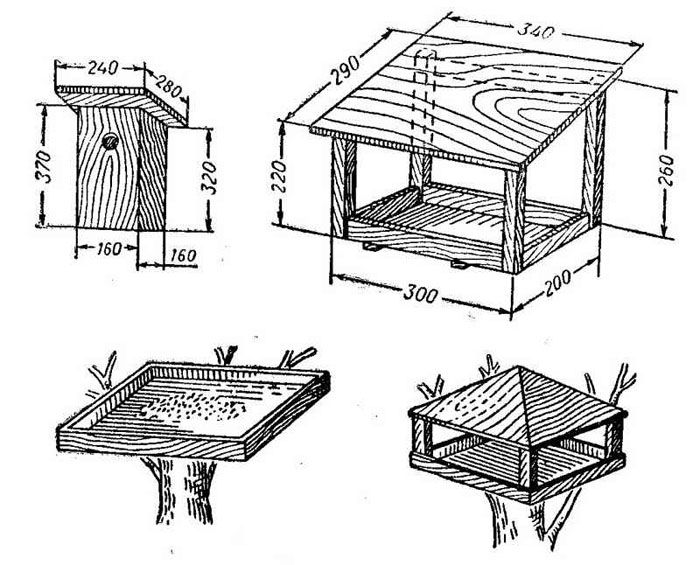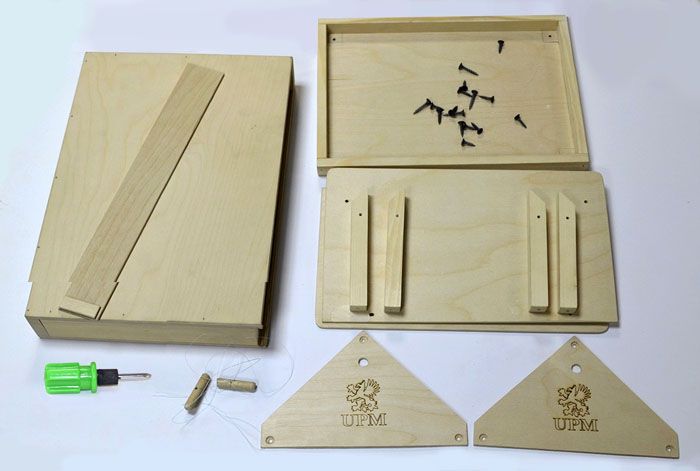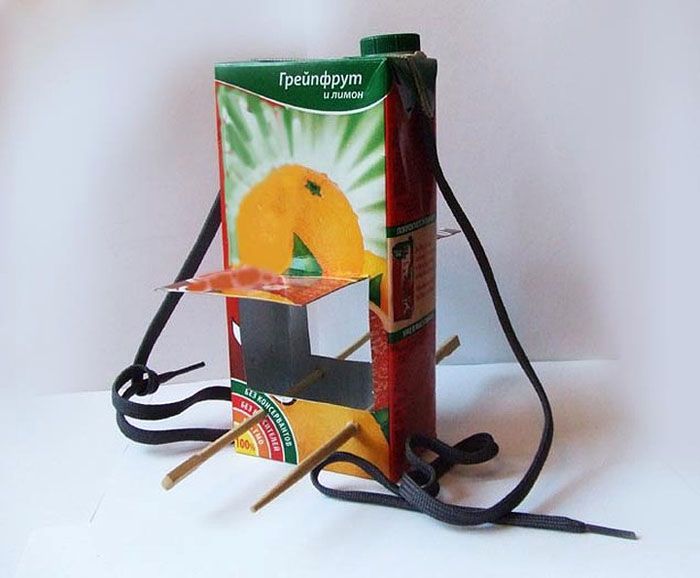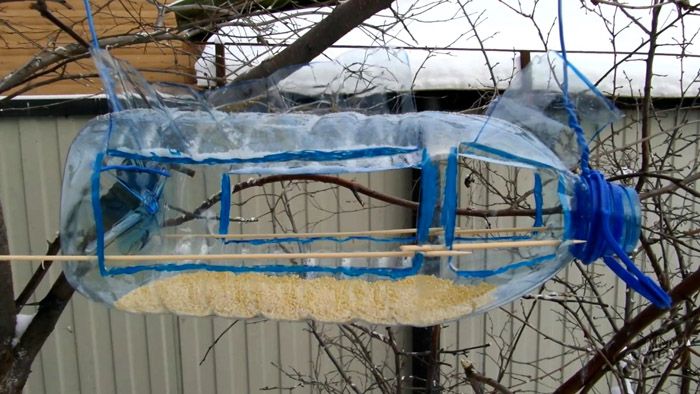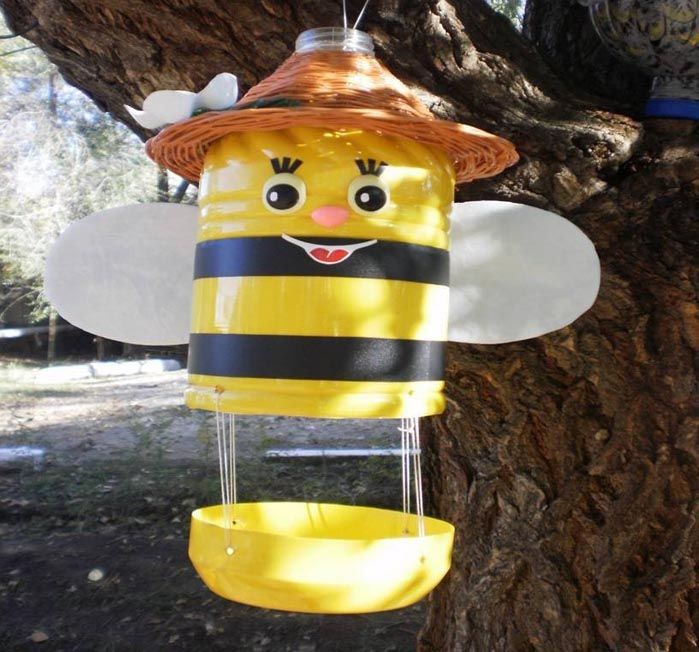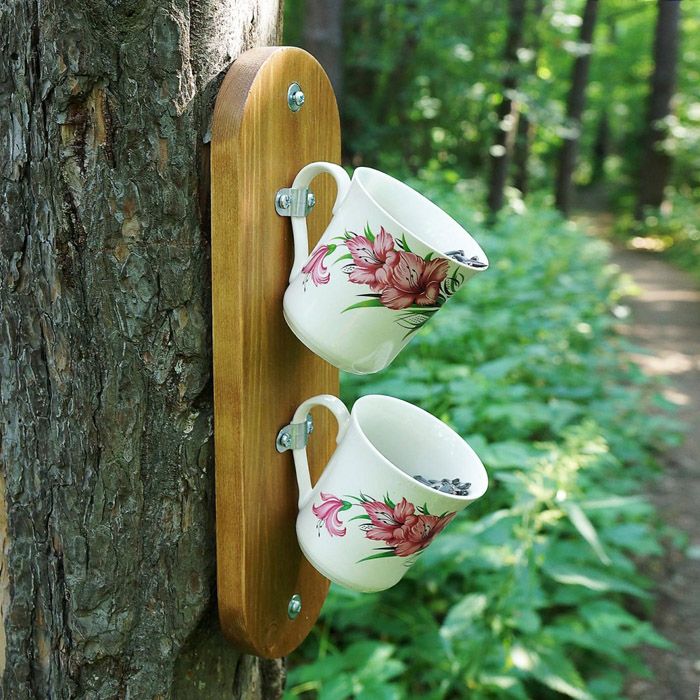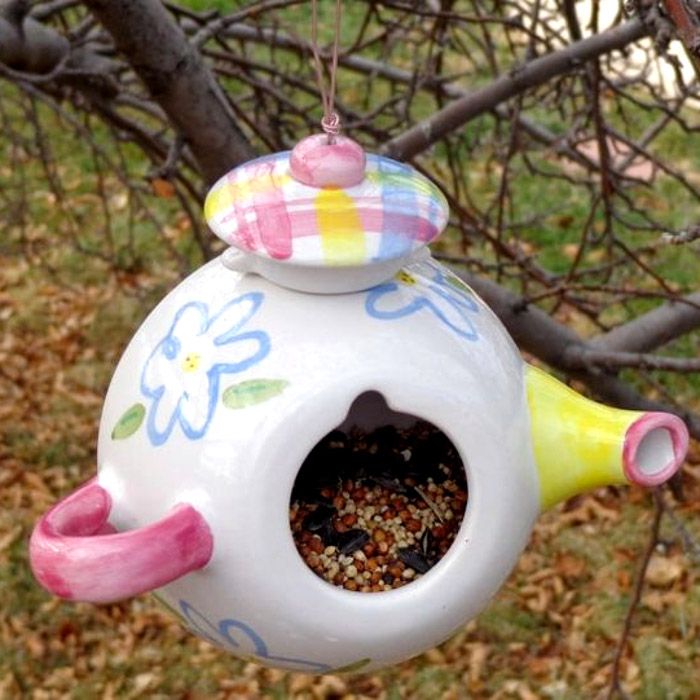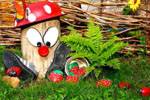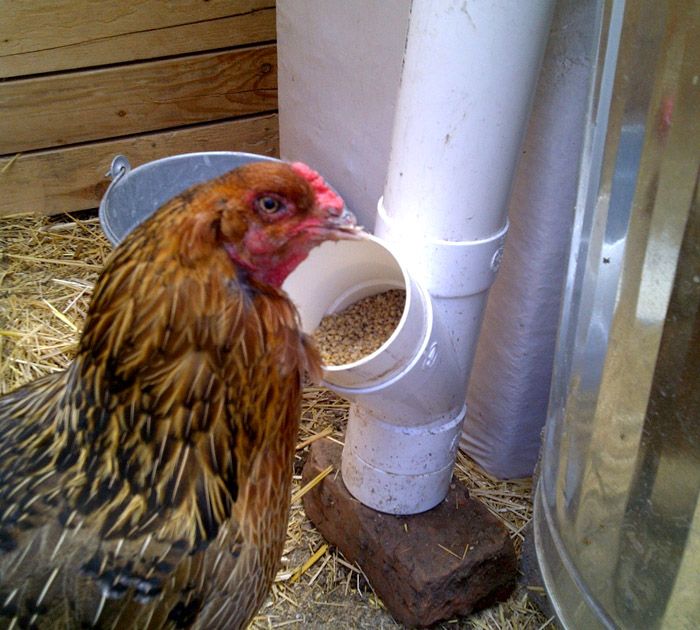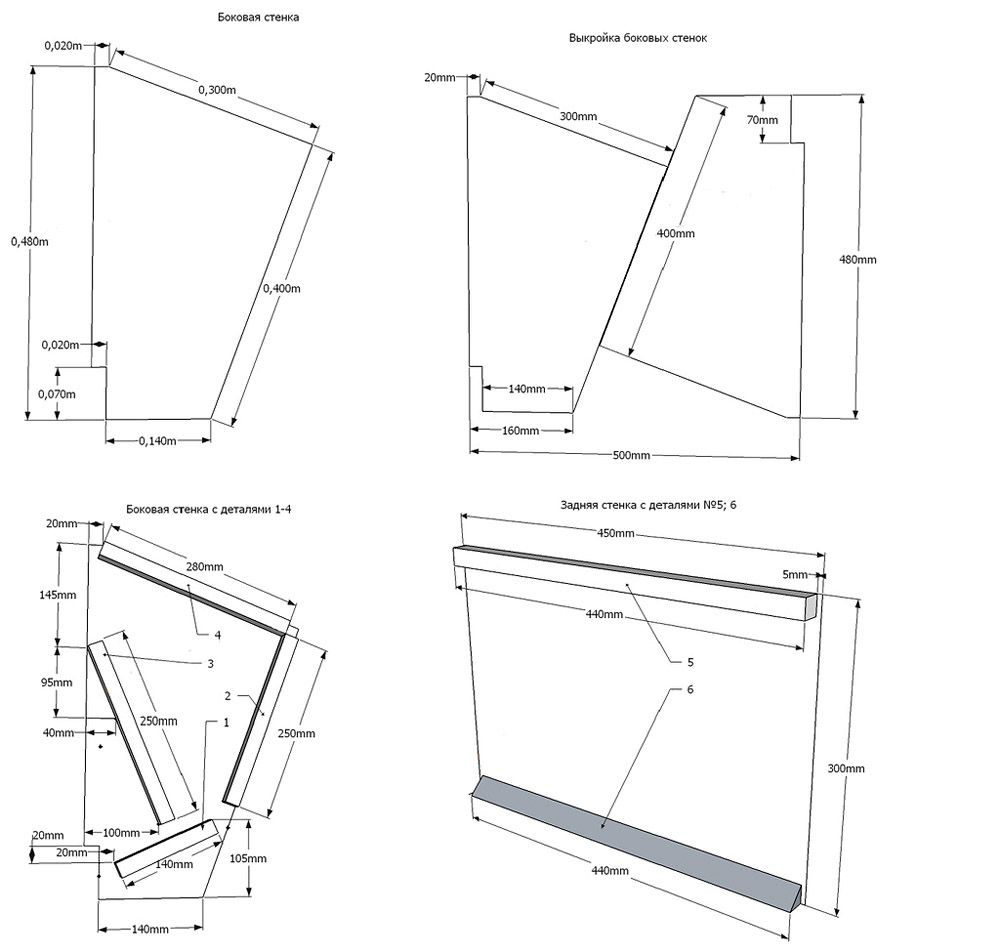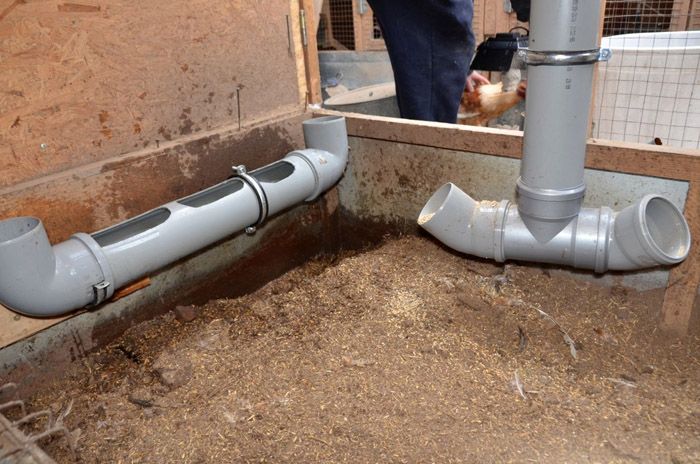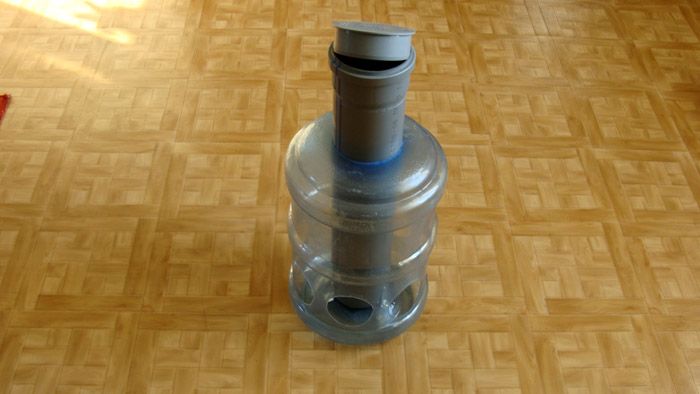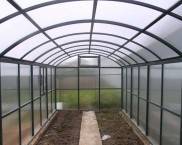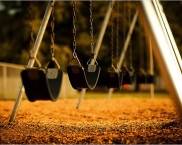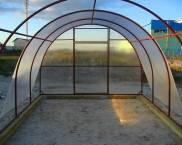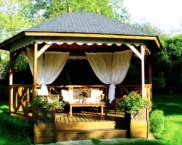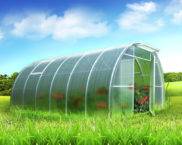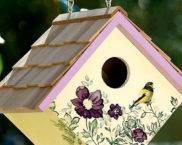Bird care - how to make a bird feeder with your own hands
In harsh winter times, only a person can take care of the birds remaining for the winter near his home. Not all of the birds are ready to go to warm countries, many migrate in search of food to small territories. Nimble birds do not hibernate, they are endlessly in search of food, and if there is no food, then nimble creatures literally fall dead right under people's feet. homemaster.techinfus.com/en/ editorial office worried about the fate of feathered friends and offers readers useful material on how to make a bird feeder with your own hands.

Feeders are an opportunity for a bird to survive in winter, and in spring it will thank a person by fighting harmful insects in the garden
The content of the article [Hide]
What can be a bird feeder
Before you rush and build a structure from the first materials that come to hand, you should consider what types of structures there are for street birds. Perhaps there is already a handy instruction and a drawing of the future feeding place for the birds. Not every bird canteen is convenient - some birdies will not be able to feed from certain structures, while others will have to wait for their more nimble companions to eat. Birds are different, depending on how the bird is used to eating, it depends on whether it will be convenient for her to take food from your feeder, or whether the anatomy of the beak will not allow it.
In addition to the fact that the food should be visible from afar, the design should be such that the food will not be swept away by the wind: not only will the food get lost, but also the food scattered on the ground serves as an excellent marker for small predators. Let's explore the best designs for a poultry dining room.
The simplest designs
The hanging platform is located either on a rope or in a mesh cover. In such a place, tits like to eat, but a woodpecker cannot visit such a kitchen.
The trays are convenient to place, their sides do not allow the food to spill out, and in general, the structure is quite stable. The roof is optional in the building.
To equip the area with food, one rectangular is enough plywood, four bars for boards and a rope for fastening. Sometimes they simply fix the plastic container from under the eggs in a stable place and pour grain and bread crumbs into the compartments. They also use other plastic trays for vegetables or salads. This is rather a temporary solution, since the plastic will quickly be blown away by the wind, or the mini-dining room will be filled up during a snowfall.
House-shaped feeders and closed options
The house looks more solid and reliable - the roof protects the edible contents and the birds themselves from wind and snow, moreover, the ubiquitous sparrows do not like to meddle in such feeders. The disadvantage of houses with roofs is that the forest birdies may not notice the salutary treat and die of hunger right under the poultry kitchen. To do this, the birds are first fed, scattering food around.
Many guests come to the house with a lean-to roof to feed: pigeons, waxwings, jays, and nutcrackers. If a roost is equipped, then it will always be noisy and interesting near the bird's dining room. It is easiest to build a house with a flat roof, but a significant drawback will be the retention of snow on it, which can cause the bird's dining room to fall.
Bunker feeders are not favored by sparrows: schooling birds do not fit in the feeding place, and those that fit in cannot interfere with oatmeal, titmouse and other birds.
The bunker structure has several compartments for feeding different birds, sometimes there are compartments for different feeds. Making your own bird feeder is easy: you can make a structure from a plastic bottle, plate, thread and super glue.
Related article:
How to make do-it-yourself feeders for street birds - description and drawings
Let's pay tribute to the vastness of the Internet: it is not necessary to reinvent the wheel when there are ready-made recommendations, instructions and drawings with pictures. It's okay if this is someone else's idea - the performance of another person will add a new zest to the design.
DIY bird feeder made of wood
Wood is an excellent durable material. Minimal woodworking skills are desirable, but for beginners it is quite possible to build a wooden feeder.
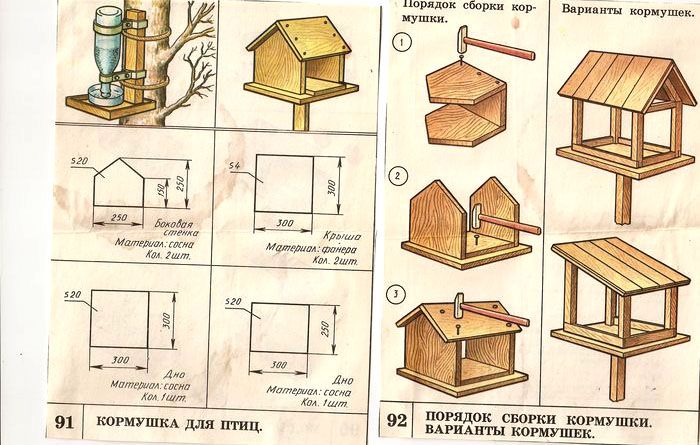
Old textbooks on technology have excellent options and drawings for making do-it-yourself feeders for street birds
It is not necessary that all surfaces are perfectly even, the more creative the craft, the more interesting it will be to watch how the birds master it. You can find 4 thick branches of a beautiful shape, prepare a platform of wood or plywood.The roof is made from wooden slats, but you can make a roof from the bark of old trees - such a structure will look very organic.
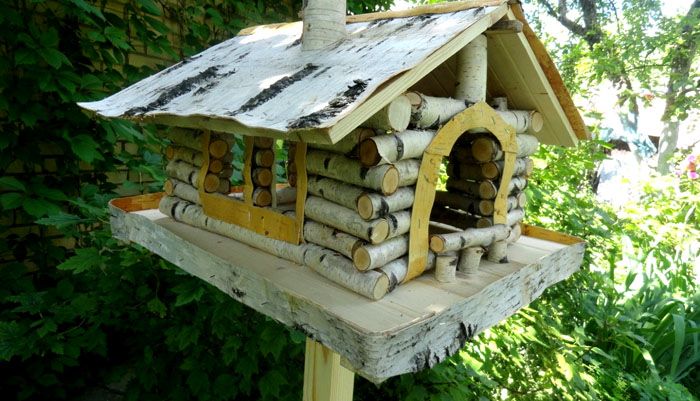
Luxurious dining house made of birch twigs and a birch bark roof. Fastening branches to each other can be done with wood glue, screws or nails.
DIY bird feeder made of plywood
Plywood is a convenient material and more than one year of service life. Plywood feeders decorate the gardenwhich is a plus. When working with plywood, use a tape measure, drill, jigsaw, corner, pencil, screws and knife.
All markings from the drawing are transferred to a sheet of plywood and the workpieces of the selected sizes are cut with a jigsaw.
The sides for the fence are attached to the base with screws. The bottom and the roof are connected with longitudinal slats. The height between the roof and the base should be comfortable for birds, but not too high.
Parts for the roof are made from identical sheets, which are connected together with screws.
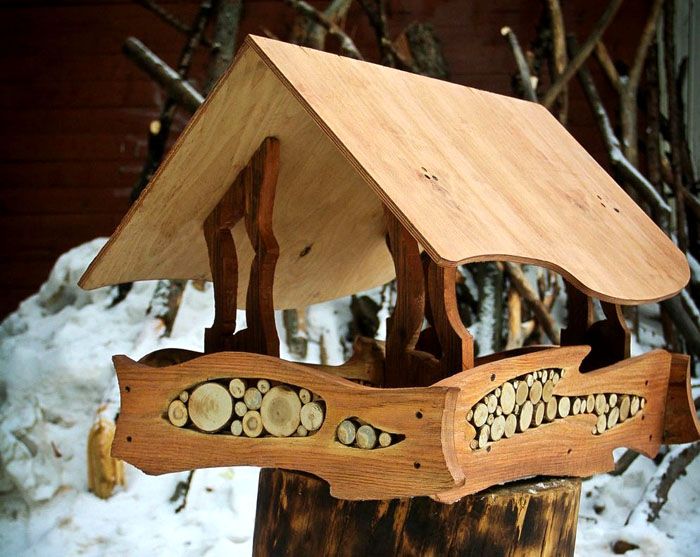
The jigsaw allows you to cut out any shape for the product, it is not necessary to make strictly geometric structures
Simple options for making feeders from boxes
Tetra Pak is a material that you don't even need to look for: boxes of juice, milk can serve as an excellent base for making a feeder for feathered friends. By connecting two narrow boxes and making holes in them at different heights, a bunker dining room for birds is obtained.

You can paint the house or leave the standard color of the box - in any case, the birds will like the design and the treat inside
For work, you need a knife, scissors, rope and 5 minutes of time.
The most interesting models of plastic bottle feeders
Plastic bottles are not used as soon as possible. The plastic feeder is lightweight, creative and convenient for birds. More often they take bottles of 0.25-0.5 liters. Holes are drawn with a marker, which are then cut out with scissors.
Original hanging bird feeders
In addition to the above materials, use any other handyman.
Methods for attaching the bird feeder to the window
Fans of observing the inhabitants outside the window can be advised to purchase or make a bird feeder with suction cups. Such a mount allows you to admire the flying birds all winter long, take pictures of them and regularly change the food.
The glass is washed with vinegar and water and the suction cups are pressed tightly against it. That's all the difficulties associated with attaching the feeder.
Related article:
Bird feeders - what are the options for feeding
In the article on bird feeding, one must not forget to talk about those birds that are of unconditional benefit to humans.Tray feeders are used to feed chickens - they are designed in such a way that the chick does not fit completely into the feeder and does not have the ability to scatter feed.
The trough feeders can be delimited from above by a grate and divided internally into compartments for different types of feed.

It is convenient for the birds to eat, and the owner does not cause problems with the feeding process
Bunker poultry canteens used for dry food: poured grain in the morning and remembered the fresh portion the next morning. The area is kept clean, and the food is dosed as it is eaten.
How to make a chicken feeder with your own hands
There is not always the means and the desire to purchase a chicken feeder in the store. We offer several options that are convenient and easy to manufacture.
DIY bunker feeder for chickens made of wood or plywood - description and drawings
This method takes more time. The video shows all the stages of work:

For manufacturing, take thick-walled plywood, screws, 90 ° hinges, skin, jigsaw, tape measure, pencil, ruler, saw, screwdriver, drill with drills, clamp.
First, markings of the desired sizes are made on plywood and all the details are drawn with a pencil and a ruler. All the parts are cut out with an electric jigsaw, and holes for fasteners are immediately made with a drill. The edges of all parts are sanded, and then assembled using screws and a clamp.
The cover is hinged to the side walls. The product is treated with an antiseptic.
Making a chicken feeder from PVC pipes
Take 1-3 sewer pipes with a diameter of 15 cm, plugs and clamps by size if necessary. It is better to make medium length of pipes - and there will be a lot of feed, and the stability is good.
Two parts are connected with a knee, one, a large one is laid horizontally and several holes with a radius of 4 cm are made in it with a drill with a circular crown. A plug is installed at the other end. The second option is installed vertically, and the elbows are placed on either side of the main pipe.
Plastic bottle feeder
A convenient option, both drinkers and feeders: from a 19-liter bottle and PVC pipe. To make the top of the bottle, a hole is made for the pipe, in which the edge is chamfered from below. Holes are made from the bottom along the base so that the bird sticks its head into them for food. Grain is poured into the pipe.
Making a bucket feeder for chickens
Automatic feeder for chickens from a plastic bucket and a plastic container or tray is very convenient. The diameter of the bowl should exceed the diameter of the bucket by 15 cm. Holes for the feed are cut at the bottom of the bucket. The containers are interconnected with self-tapping screws.
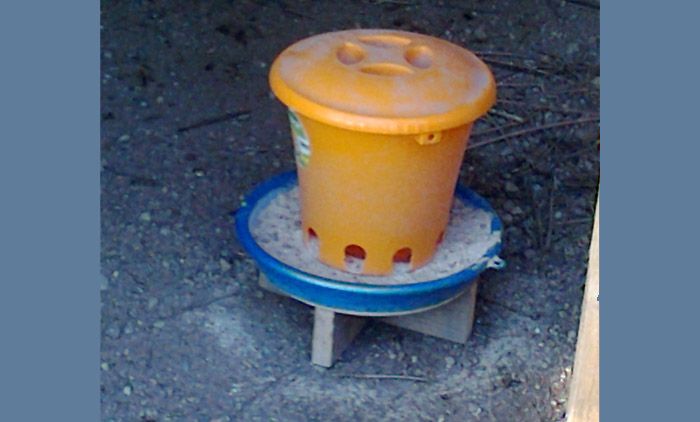
The structure is installed on the floor or suspended at a distance of 20 cm from the floor. Cover the food
Features of making do-it-yourself chicken feeders
Chicks can actively scatter feed with their paws, therefore, a design is provided for feeding them, where they will be deprived of this opportunity and will not stain food.
At the bottom of the bucket, holes are cut out for food, and a container is installed under the bucket itself, where food will be poured. The bucket must be covered with a lid. Taking care of the bird allows you to preserve the diversity of species in nature and fosters in people a responsible attitude towards our smaller brothers. Helping birds in winter is an important task that everyone can do.




